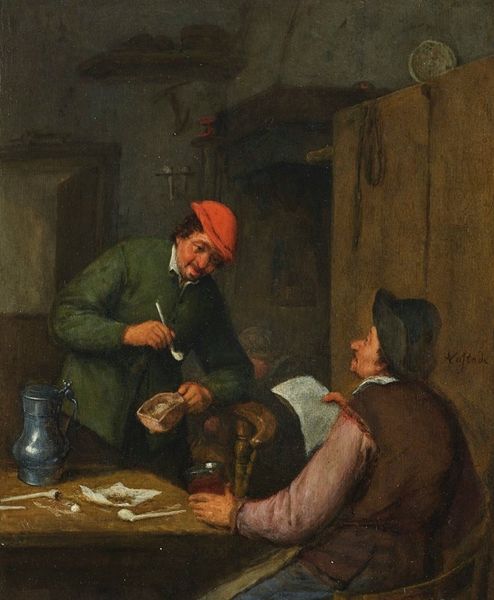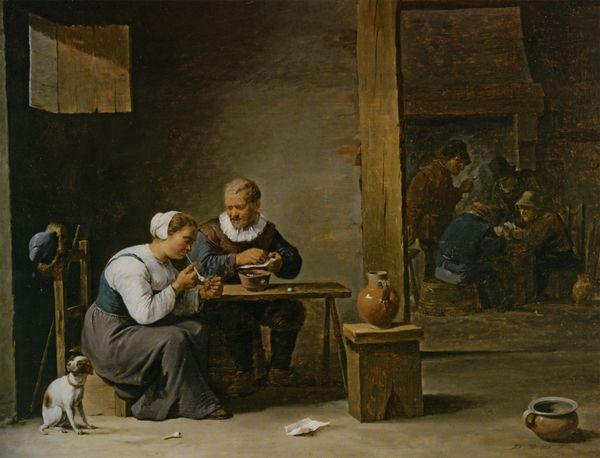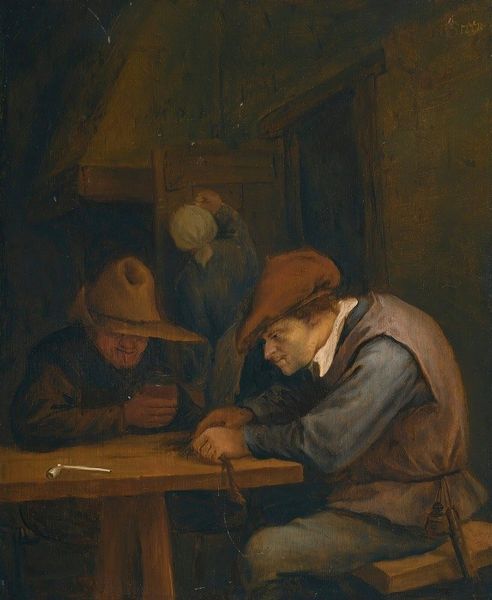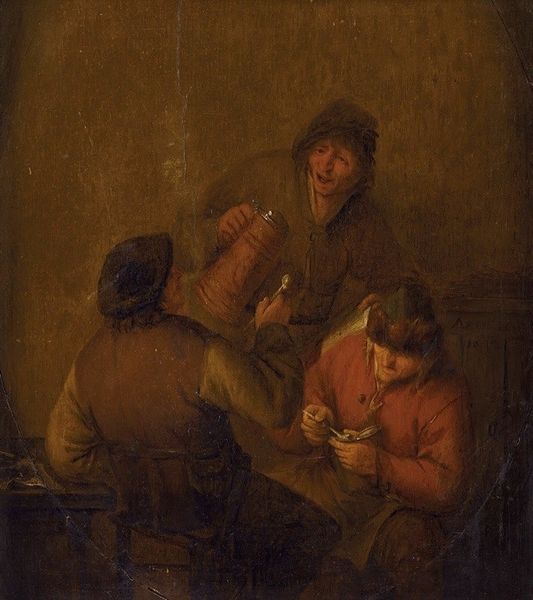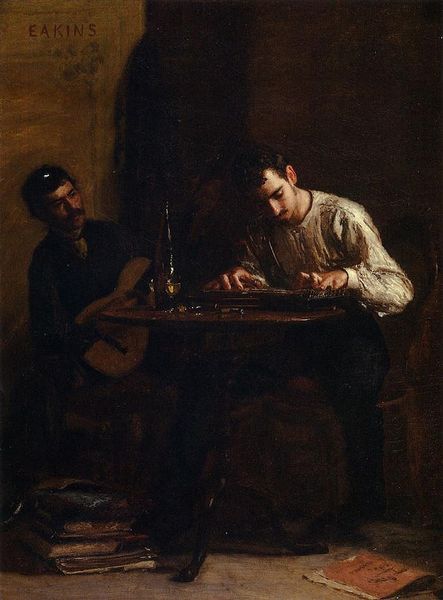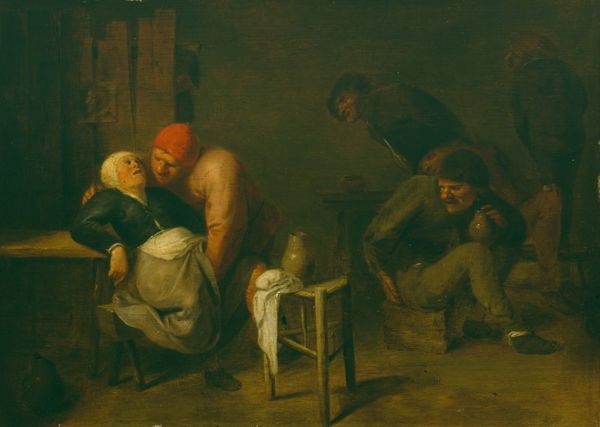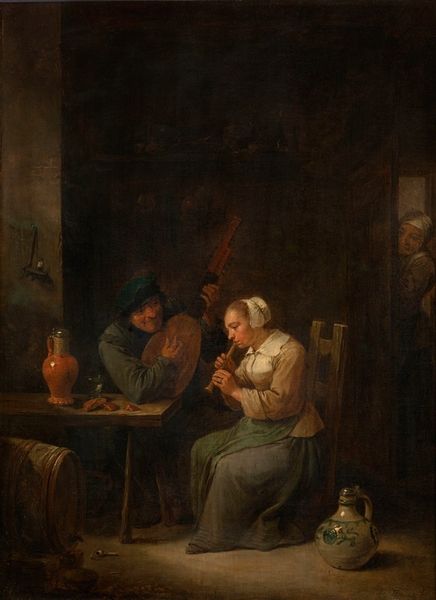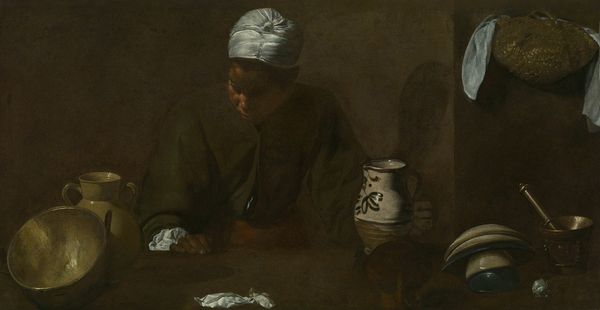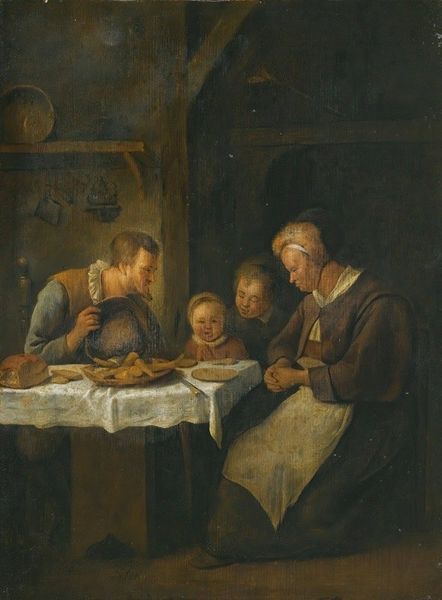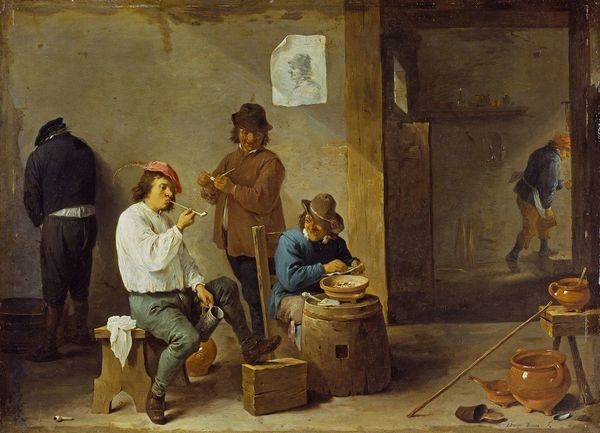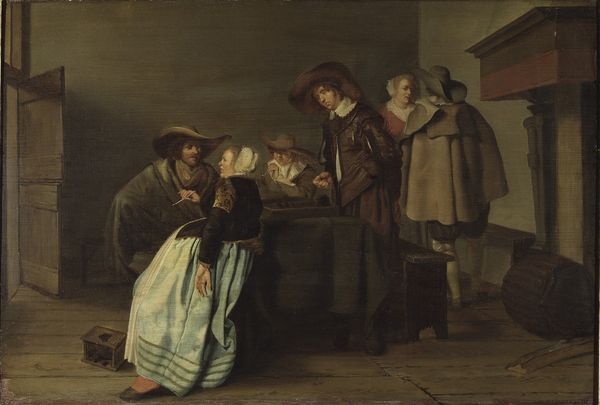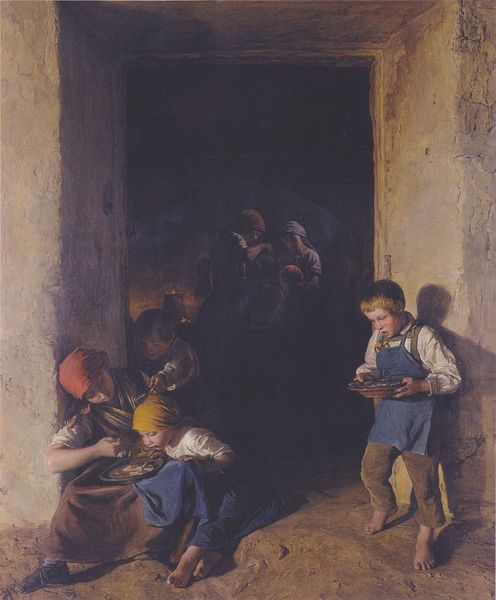
Two Young Men Eating At A Humble Table 1622
0:00
0:00
diegovelazquez
Apsley House, (Wellington Museum), London, UK
painting, oil-paint
#
portrait
#
baroque
#
painting
#
oil-paint
#
figuration
#
genre-painting
Dimensions: 104 x 65.3 cm
Copyright: Public domain
Curator: Before us hangs Diego Velázquez's "Two Young Men Eating At A Humble Table", painted around 1622. What strikes you most at first glance? Editor: The quiet intimacy. It's a scene bathed in tenebrism, that stark contrast between light and shadow, creating a pocket of normalcy amidst a world of darkness. It feels… almost melancholic. Curator: Absolutely. And that starkness contributes to the artwork's intense focus on basic human needs. Consider the objects on the table: earthenware, pewter, simple foods. Velázquez has deliberately used a collection of meaningful yet very earthly artifacts. The single piece of fruit is reminiscent of a skull on a Memento Mori painting, while the white cloth is staged like a funeral pall. Editor: Memento Mori, yes, a constant reminder of mortality woven into everyday life. These figures are ordinary—the painting challenges the romanticized image of this era. It reflects poverty and struggle that underpin courtly life and baroque sensibilities. Curator: Indeed. Genre painting at its most observant. The subjects and setting depart from the exalted biblical and mythological scenes so popular at the time. The image has cultural memory of Spanish bodegones that blend still life with daily life. It tells us something essential about seventeenth-century Spanish society, doesn’t it? Editor: Absolutely. I think, too, it gives visibility to segments of society so frequently overlooked. How Velázquez treats each figure gives them an individual dignity. In these images, it acknowledges a more diverse demographic. And perhaps it asks us today—who remains invisible, whose stories remain untold? Curator: It does indeed make us consider, in light of its earthy imagery, the timeless significance of basic elements like food and society and of those who partake. The artist presents not a grand historical moment but a commonplace tableau. In this tableau are codes for larger stories. Editor: By bringing what's usually kept hidden into view, it acts almost like a visual manifesto. A moment of quiet defiance, suggesting that significance isn’t only found in grandeur but also in shared, human encounters. Curator: Yes, I would agree, that its humbleness only deepens its capacity to endure. Editor: Its relevance speaks across centuries.
Comments
No comments
Be the first to comment and join the conversation on the ultimate creative platform.
